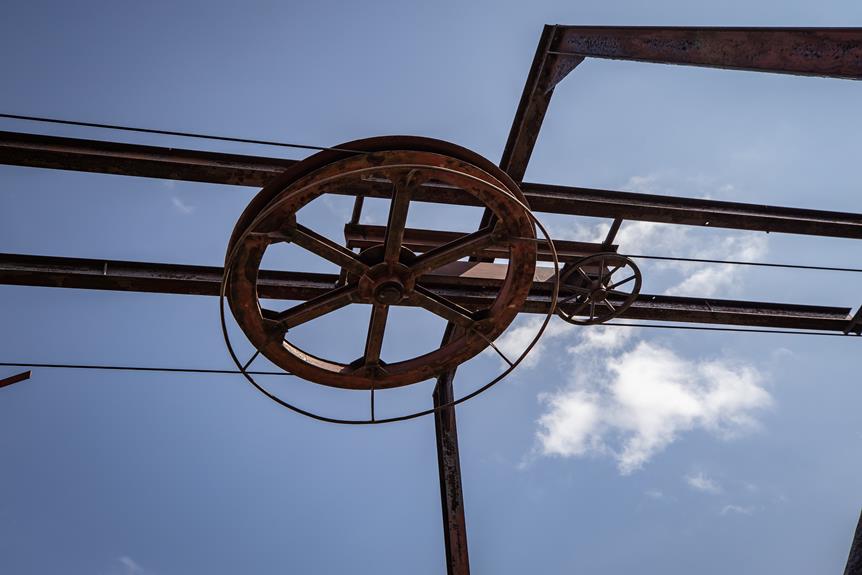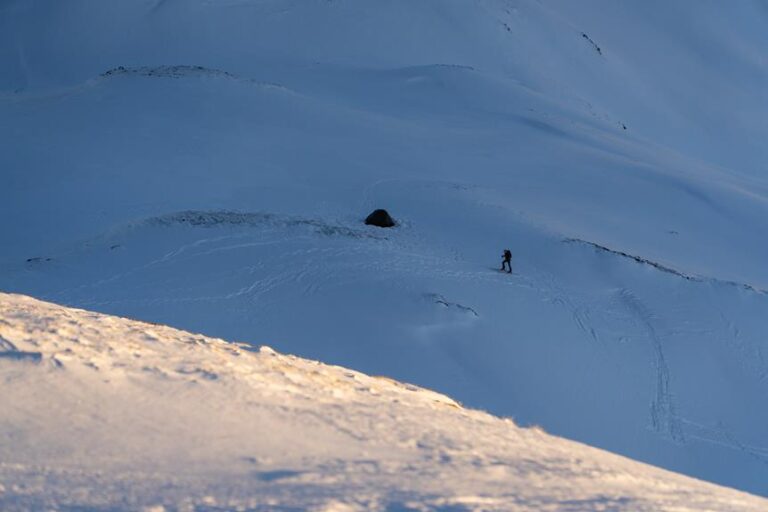Skis Rusty Edges – Must Read Insights!
Like the sun setting on a pristine snow-covered mountain, rusty edges on your skis can cast a shadow over your performance on the slopes. But fear not, for there is a way to restore your skis' sharpness and regain control as you carve your way down the mountain.
In this discussion, we will explore the common causes of rusty edges, the effects it can have on your ski performance, and most importantly, how to remove that rust and keep your edges gleaming like freshly fallen snow.
So, grab your goggles and tighten those bindings, because we're about to embark on a journey to conquer the rust and reclaim your ski adventures.
Common Causes of Rusty Edges
Exposing your skis to moisture and humidity is one of the common causes of rusty edges. When your skis come into contact with water, whether it's from melted snow or rain, the moisture can seep into the metal edges, causing them to rust.
Rust on edges not only affects the performance of your skis but also poses a safety hazard. Another factor that contributes to rust formation is the presence of salt or chemicals on the slopes. These substances can accelerate the corrosion process, leading to rusted edges.
Improper storage without drying your skis properly can also result in rust formation. If you store your skis while they're still wet, the moisture will linger, increasing the chances of rust developing on the edges. It's important to keep your skis in a dry and well-ventilated area to prevent rust.
Finally, lack of regular maintenance and tune-ups can leave your skis vulnerable to rust. By neglecting to remove any rust that may have formed and not using a gummy stone to maintain the edges, you're allowing the rust to persist and potentially worsen over time.
Regular maintenance is essential to prevent rusty edges and ensure optimal performance on the slopes.
Effects of Rusty Edges on Ski Performance
When your ski edges become rusty, it can significantly impact your performance on the slopes. The effects of rusty edges on ski performance are numerous and can greatly affect your overall skiing experience.
One of the main impacts is on turning. Rusty edges can hinder your ability to make sharp and precise turns, making it difficult to navigate through different terrains.
The decreased stability is another consequence of rusty edges. As rust accumulates on the edges, it disrupts the smooth gliding motion and stability of the skis. This can make it challenging to maintain balance and control, increasing the risk of accidents or falls.
Additionally, rusty edges can lead to a loss of grip on the snow. The rust creates a barrier between the edges and the snow, reducing the friction and traction necessary for proper skiing technique. As a result, you may experience difficulties in maintaining control and executing maneuvers, especially on icy or packed snow conditions.
To avoid these negative effects, it's crucial to regularly maintain your ski edges by removing rust and seeking professional tuning when necessary. By keeping your edges in optimal condition, you can ensure better performance, improved maneuverability, and enhanced safety on the slopes.
Preventing Rusty Edges on Your Skis
To maintain optimal performance on the slopes, it's crucial to prevent rusty edges on your skis by implementing proper maintenance techniques. Ski edge maintenance plays a vital role in preventing rust and ensuring your skis perform at their best.
One effective way to prevent rust is by storing your skis in a dry and well-ventilated area. Moisture can accelerate rust formation, so keeping your skis in a dry environment is essential.
Additionally, applying a light coating of mineral oil on the edges can help prevent future rusting. The oil creates a protective barrier against moisture and oxidation.
After each use, make sure to wipe off any moisture and dirt from the edges. This simple step can go a long way in preventing rust from forming.
Regularly inspecting and maintaining the edges is also crucial. Look for any signs of rust or damage and address them promptly.
Finally, using protective covers or sleeves during storage or transport can help prevent rust on ski edges. These covers provide an extra layer of protection against moisture, ensuring that your ski edges stay rust-free.
How to Remove Rust From Ski Edges
To effectively remove rust from your ski edges, use a gummy stone, sandpaper around a file, or wet/dry silicon carbide paper. These household items can help you get rid of the rust and restore the smoothness of your ski edges. However, if you're unsure about the process or if the rust is too severe, it's advisable to seek professional rust removal services.
There are alternative methods for rust removal, but it's important to exercise caution. Avoid using naval jelly and Evapo Rust on your ski edges as they aren't recommended. Instead, consider using Rust Check or other chemicals that can convert the rust into a different substance. This can help prevent further rusting and protect your ski edges from future damage.
When removing rust, be mindful of excessive or deep pitting on the ski edges. Excessive pitting can compromise the structural integrity of the ski and affect its performance. It's essential to strike a balance between removing the rust and preserving the integrity of the ski edges.
To prevent future rusting, make sure to neutralize the rust and avoid leaving moisture on your skis. Moisture can cause worse problems if it seeps into the core of the ski. After removing the rust, dry your skis thoroughly before storing them to keep them in good condition.
Maintaining Rust-Free Edges for Long-Term Performance
If you want to maintain rust-free edges for long-term performance, it is essential to take proactive steps to prevent rust from returning and damaging your ski edges. This involves implementing effective rust removal techniques and regular maintenance. To emphasize the importance of long term rust prevention, consider the following table:
| Long Term Rust Prevention |
|---|
| Regular Maintenance |
| Proper Storage |
| Protective Coatings |
Regular maintenance is crucial in preventing rust from forming on your ski edges. Make it a habit to inspect and clean your edges after each use. Use a gummy stone, sandpaper around a file, or wet/dry silicon carbide paper to effectively remove rust. Avoid using Naval jelly and Evapo Rust as they are not recommended for ski edges. Additionally, consider using Rust Check or other chemicals to convert rust into a different substance as a method for rust removal.
Proper storage is also key. Keep your skis in a dry environment, away from excessive moisture. Moisture left on skis can cause worse problems if driven into the core of the ski. Lastly, applying protective coatings, such as wax or edge guards, can provide an extra layer of defense against rust.
Frequently Asked Questions
Can You Fix Rusty Ski Edges?
Yes, you can fix rusty ski edges. Rusty edges can negatively impact performance and safety. It's recommended to seek professional repair to ensure a thorough and effective fix. DIY repairs may not be as reliable.
Is It Bad if My Skis Have Rust?
Having rust on your skis can impact their performance. It's important to regularly maintain them to prevent rust. You can remove rust using techniques like using a gummy stone or sandpaper.
How Do You Fix Rusted Edges?
To fix rusty edges, remove rust from ski edges using a gummy stone or sandpaper. Avoid naval jelly or Evapo Rust. Consider using Rust check. Be cautious of excessive pitting. Prevent further rust by neutralizing and drying skis.
How Do You Prevent Rust on Skis?
To prevent rust on your skis, regularly inspect and maintain the edges. Wipe off moisture and dirt after each use, store them in a dry area, apply mineral oil for protection, and consider using a cover or sleeve for storage or transportation.
Conclusion
In conclusion, regular maintenance and removal of rust from ski edges is crucial for optimal performance on the slopes.
By using a gummy stone, like the Swix Soft Gummy Stone, skiers can effectively restore sharpness, improve control, and prevent further damage to their skis.
With rust-free edges, skiers can enjoy better grip, maneuverability, and longevity from their equipment, ensuring a more enjoyable and safe skiing experience.






